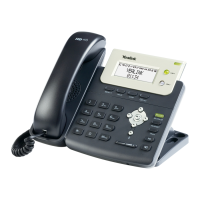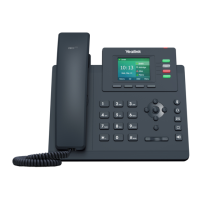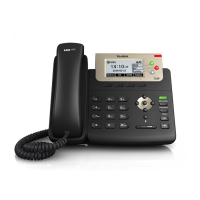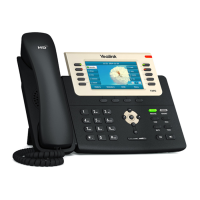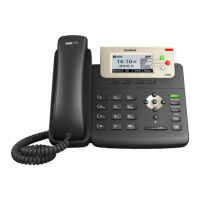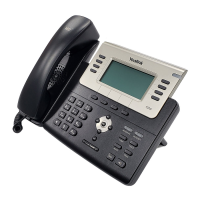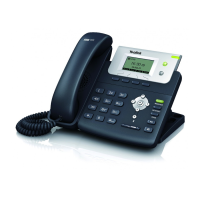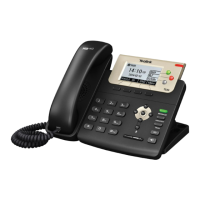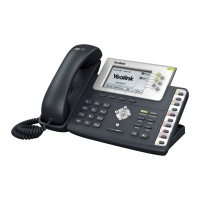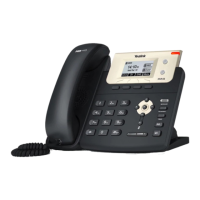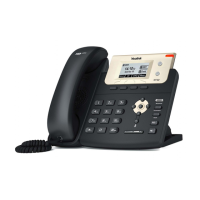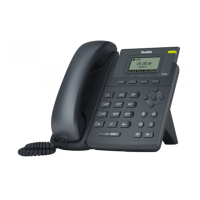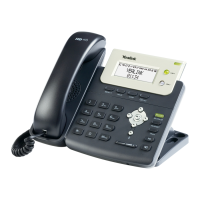









Do you have a question about the Yealink SIP-T20P and is the answer not in the manual?
| Keypad number of keys | 31 |
|---|---|
| Speakerphone | Yes |
| Voice codecs | G.711, G.722, G.723.1, G.726 |
| Mounting | Desk/Wall |
| Handset type | Wired handset |
| Product type | IP Phone |
| Product color | Black |
| Touchscreen | - |
| Lines quantity | 2 lines |
| Phonebook capacity | 1000 entries |
| Number of VoIP accounts | 2 |
| Bluetooth | No |
| Security algorithms | HTTPS, SSL/TLS |
| AC adapter input voltage | 100 - 240 V |
| AC adapter output voltage | 5 V |
| Power consumption (typical) | 2.6 W |
| Operating relative humidity (H-H) | 10 - 95 % |
| Compliance industry standards | IEEE 802.3af |
| Number of handles included | 1 pc(s) |
| Depth | 200 mm |
|---|---|
| Width | 185 mm |
| Height | 90 mm |
| Weight | 770 g |
Lists the topics covered in the user guide, including chapters on overview, getting started, and features.
Details major updates and changes made in comparison to earlier versions of the firmware and documentation.
Explains the different hardware components of the SIP-T20P IP phone, such as the LCD screen and keypad.
Describes the various icons that appear on the phone's LCD screen and their meanings.
Details the status indicators and their meanings for the power LED and line key LEDs.
Explains the two main ways to configure the phone: via the phone's interface and via a web browser.
Lists the available documentation for the SIP-T20P IP phone, including guides and their availability.
Lists all the items included in the SIP-T20P IP phone package for initial setup.
Provides step-by-step instructions on how to physically install the SIP-T20P IP phone.
Explains the automatic phone initialization process and DHCP configuration.
Describes how to view the phone's system status and network information.
Guides the user through configuring static IP addresses and PPPoE connections.
Covers the process of registering the phone with the network and SIP server.
Explains what is displayed on the phone's LCD screen when it is idle.
Covers basic phone customizations like language, time, date, and administrator password.
Explains how to adjust volume for ringer and audio devices, and select ring tones.
Details how to manage contacts, including adding, editing, deleting, and searching in the local directory.
Describes how to view, dial, add, or delete entries from the call history.
Covers customizations like text logo and headset settings.
Explains how to configure Line Keys and Programmable Keys for various functions.
Provides instructions on how to make calls using the handset, speakerphone, or headset.
Explains how to answer incoming calls using different audio modes and when already in a call.
Details the methods for ending an active call.
Covers redialing the last call and previously dialed numbers.
Explains how to enable the feature for the phone to automatically answer incoming calls.
Describes how to configure the phone to automatically redial a busy number.
Explains how to get notified when a busy callee becomes available.
Details how to configure and use a key to call back the last incoming call.
Explains how to mute and unmute the microphone during a call.
Describes how to place a call on hold and retrieve it later.
Covers enabling and disabling DND mode for the phone or specific accounts.
Explains how to configure call forwarding types like Always, Busy, and No Answer.
Details blind, semi-attended, and attended transfer methods.
Explains how to enable call waiting to receive new calls during an active call.
Covers setting up local and network conference calls.
Describes how to place a call on hold and retrieve it from another phone.
Explains direct and group call pickup features.
Covers blocking caller ID and phone number when making calls.
Explains how to automatically reject incoming calls from anonymous callers.
Monitors user status and allows dialing or picking up calls based on status.
Monitors a list of users and displays their status via BLF keys.
Allows multiple phones to share the same extension number for simultaneous ringing.
Details configuring record keys for call recording via phone or URL.
Facilitates quick connections with colleagues via intercom calls.
Enables sending announcements to a multicast group using RTP streams.
Explains how to play music to callers placed on hold.
Describes how the ACD system distributes incoming calls to registered users.
Covers leaving and listening to voice messages.
Explains how the phone indicates new voice messages.
Provides solutions for a blank phone screen, checking power and connections.
Addresses the "No Service" message, often related to SIP account registration.
Offers steps to troubleshoot issues with receiving a dial tone.
Guides on troubleshooting why the phone is not ringing, checking volume.
Lists reasons for not receiving calls, including DND and call forward.
Troubleshooting steps for a non-functional handset.
Troubleshooting steps for a non-functional headset.
Explains power source priority when both PoE and adapter are connected.
Instructions for changing the user password via the web interface.
Steps to reboot the IP phone using the web user interface.
Information on contacting resellers for service agreements.
Legal disclaimer regarding Yealink's liability for product use.
Essential safety precautions for using and handling the device.
